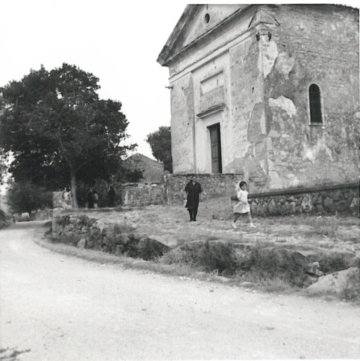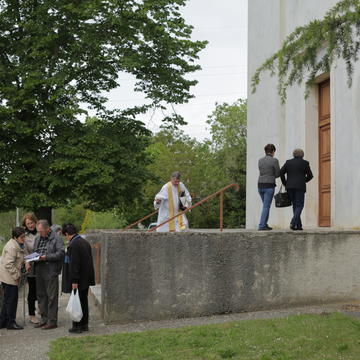The name hISTROX is our new version of the name ISTROX (The Istro-Romanian Language and the Oxford University Hurren Donation), which is what we called our earlier projects on the Istro-Romanian language and community.
hISTROX stands for: ‘history’ + ‘Istro-Romanian’ + ‘Oxford’. Our new project runs between 2024 and 2027.
hISTROX = ISTRO-ROMANIAN.

Istro-Romanian is a language with maybe as few as 120 active and fluent speakers in its home region, the Istrian peninsula of north-western Croatia. They are mainly in the village of Žejane, north of Mt Učka, and in a few villages, the largest of which is Šušnjevica, south of the mountain. It also has other speakers internationally, for example in the United States and Australia. It is a Romance language, which means that it is descended from Latin, and it is closely related to Romanian and more distantly to languages such as Italian, French, Spanish, or Portuguese. It has also been profoundly affected by centuries of contact with other languages, especially Croatian, which belongs to a different ‘family’ of languages, Slavonic (which include, among many others, Bulgarian, Slovenian, Polish, and Russian). According to UNESCO, Istro-Romanian is a ‘severely endangered’ language, that is to say that it’s at imminent risk of disappearing completely. Detailed information about Istro-Romanian is generally inaccessible, both to specialist linguists and to others who want to know about it—including speakers of the language and their families.

hISTROX = HISTORY.
Our history of Istro-Romanian is something new. Nobody has ever attempted to write a comprehensive history of the language before. Our project is concerned not just with the evolution of the words, grammar, and sounds of Istro-Romanian, but most of all with the history of its speakers. We are especially interested in what living speakers, in Croatia and across the world, are able to tell us in their own words from their own lived experience about the history of their community over the 80 years since the Second World War.
hISTROX = OXFORD.
Our project is based at the University of Oxford and is funded through the generosity of the Unites Kingdom’s Leverhulme Trust. There has been interest in Istro-Romanian in Oxford since the 1960s, when the Oxford linguist Tony Hurren visited the community and wrote about the language. Our original ISTROX project was based on a body of sound recordings made by Tony Hurren in Istria, during the 1960, and donated by his spouse, Mrs. Vera Hurren, to the Taylor Institution Library in Oxford. We opened up this material to specialist linguists and the Istro-Romanian community by digitizing and uploading them on the online platform Zooniverse, where we invited the remaining speakers of the language to transcribe and translate them. Our Zooniverse page remains open, and we continue to welcome contributions.